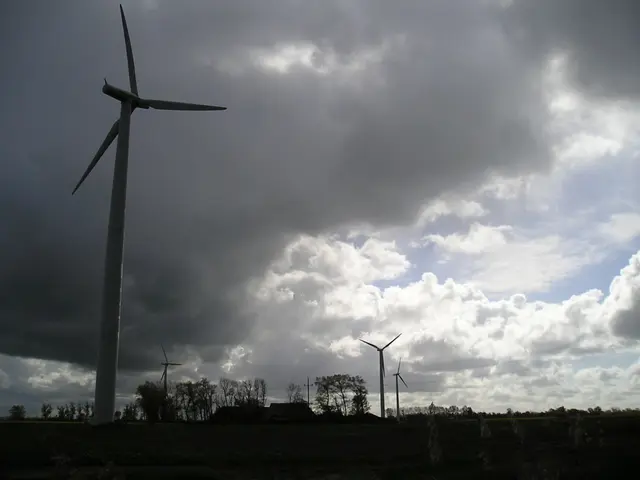EU-Russia Trade Status in 2025: Key Export and Import Trends
In a significant shift in their trading relationship, the European Union (EU) reported a trade surplus with Russia for the first time in more than 20 years in the second quarter of 2025. This development comes amidst a marked reduction in the EU's energy dependence on Russia.
The EU's energy trade deficit with Russia, which was a staggering €42.8 billion in Q2 2022, reduced drastically to €4.2 billion in the same quarter of 2025. This decline is attributed to several factors, including the EU ban on seaborne imports of Russian crude oil, which took effect on 5 December 2022, and the subsequent sharp decline in imports from Russia.
Russia, once the EU's largest supplier of petroleum oils, saw its share of petroleum oil imports fall from 29% in Q2 2021 to a mere 2% by Q2 2025. Similarly, the EU's energy-related imports from Russia, including natural gas, nickel, and iron and steel, have experienced significant reductions. Russia's share of EU natural gas imports dropped from 39% to 13%, nickel imports fell from 41% to 15%, while iron and steel declined from 18% to 6%.
The EU's overall trade volume with Russia dropped to its lowest level since 2002 in the second quarter of 2025, standing at €14.5 billion. However, the decline in imports was partially offset by a rise in exports, resulting in a small trade surplus of €0.5 billion.
Chemicals and related products continued to be the EU's largest trade surplus with Russia, with a value of €2.8 billion in mid-2025, down from €3.2 billion in Q2 2021. The EU's surplus in machinery and vehicles, which was €9.7 billion in Q2 2021, dropped to €0.5 billion in Q2 2025.
The EU's goal to reduce its energy dependence on Russia has shown significant progress, particularly in its oil trade. Extra-EU trade, which includes transactions with all countries outside the EU, has also shown a significant decline in the share of trade with Russia since the invasion of Ukraine. Russia's share of extra-EU exports fell from 3.2% in Q1 2022 to 1.2% in Q2 2025, while its share of extra-EU imports dropped from 9.3% to just 1.1%.
In a bid to support Ukraine's energy security, the EU signed a €500 million loan ahead of winter. The EU, along with G7 countries and other partners, also stopped treating Russia as a Most-Favoured-Nation and implemented a fourth package of sanctions on 15 March 2022.
Russia, once one of the EU's main trading partners, has seen its role diminish dramatically. The EU's main exports to Russia in 2021 and early 2025 were machinery, vehicles, electrical machinery, plastics (all declining except pharmaceuticals which remained stable around €2.35 billion in Q1 2025). The EU's imports from Russia, especially energy products, decreased significantly after 2022 due to sanctions and the war in Ukraine, with Russia’s share in EU energy imports dropping notably by 2024-2025. Russia’s main exports continued to be energy-related, contributing to its persistent trade surplus (around $9.3 billion in mid-2025), though this surplus shrank compared to previous years.
In conclusion, the EU's trade with Russia has undergone a significant transformation in the past few years, with the EU achieving a trade surplus for the first time in more than two decades. This shift is largely due to reduced energy dependence on Russia and a series of sanctions implemented in response to Russia's invasion of Ukraine.








